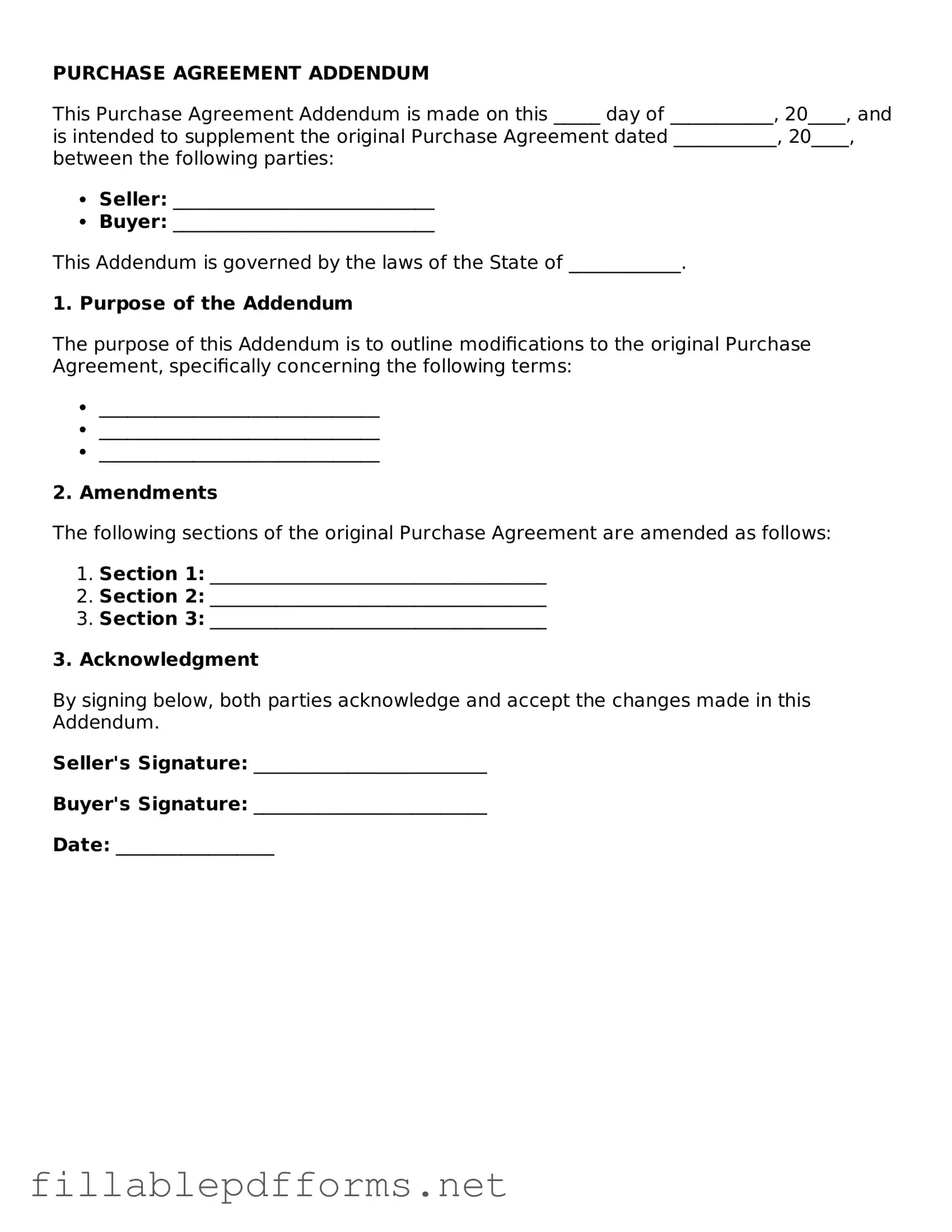Blank Purchase Agreement Addendum Template
The Purchase Agreement Addendum is a document that modifies or adds to the terms of an existing purchase agreement. It allows buyers and sellers to clarify specific aspects of the deal, ensuring that both parties are on the same page. This addendum can address various issues, from contingencies to additional conditions, enhancing the overall clarity of the transaction.
Launch Editor Here
